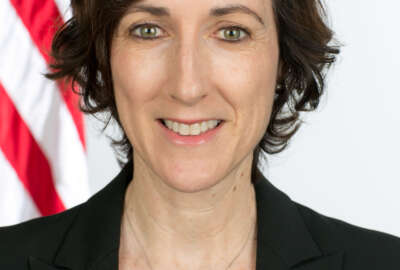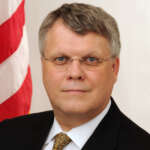

The Department of Health and Human Services stood up its Idea Lab in 2013 to establish and build on a culture of innovation within the department.

There’s no rule that says innovations have to come from within their own industries. In fact, one agency is finding that the opposite is true. One program that came out of the Department of Health and Human Services’ Idea Lab originated with a former employee of UPS.
“My friend and former mentor, Todd Park … used to often cite Bill Joy’s law from Sun Microsystems: ‘Most of the smart people in the world don’t work for you.’ But you want to be able to tap into those ideas and bring them into health care,” Greg Downing, executive director of innovations at HHS, told the Federal Drive with Tom Temin.
Downing said HHS was having trouble with tagging and tracking organs meant for transplants because everything was done by paper. So it brought in someone from UPS who had had a personal experience with the organ transplanting system and wanted to help fix the problem.
After working with that person, HHS now uses barcoding and geospatial mapping to track organs and make sure they’re going to the right place at the right time.
“There’s never been a better time to be an innovator in health care, whether you’re a small startup working on consumer apps, or helping with decision-making processes with provider groups,” said Downing.
As technology continues to improve at such a rapid pace, health care innovators are integrating it into their missions and finding new ways to deliver. Telehealth, telemedicine, newly identified diagnosis tools and methods, precision medicine and genomics have all been recent, revolutionary improvements.
“In terms of health reform I think maybe the most significant thing is the change from fee-for-service to the value-based systems we’re now seeing in play. And this is radically changing many aspects of health care delivery, focusing on cost and quality,” Downing said.
And HHS is working on ways to adapt to those changing aspects. It’s examining ways to redesign clinical care practices and provide patients with more data and feedback, something Downing said couldn’t have been accomplished ten years ago. The technology simply wasn’t there.
Part of this effort is the Health Data initiative. HHS has been creating large data sets for crowdsourcing purposes, encouraging people to develop applications that geospatially map the location of facilities, or allow for comparisons of service quality.
Downing said transparency is the key element: Patients have to be able to compare the quality of service from one doctor to another.
He said the innovation labs provide the framework for HHS research, looking into areas such as improvements in data applications, reductions in time for the processing of claims, and speeding up emergency waiting room times.
“This is an experiment, frankly,” Downing said. “We’ve been building a number of programs to recognize and incentivize innovation within our own organization as well as focusing on outside aspects.”
He said the Idea Lab program combines a startup incubator, innovation sprints and a lot of coaching to create a “minimal viable product,” and then try to implement it on a larger scale.
But innovation isn’t easy, especially in a bureaucratic organization like a government agency.
“One has to embrace the notion that most things don’t work the first time you try them,” Downing said. “The notion of failing fast and taking the knowledge from failures into the next level of understanding … that’s one of the keys to breakthroughs, is being able to understand why things didn’t work.”
One of the ways HHS tries to accomplish this is by bringing in outside experts that may be able to share new perspectives on a particular problem, like the former UPS employee.
“Not hardly a day goes by that there isn’t a convening of some group of experts to help us with some insights,” Downing said.
Copyright © 2024 Federal News Network. All rights reserved. This website is not intended for users located within the European Economic Area.
Daisy Thornton is Federal News Network’s digital managing editor. In addition to her editing responsibilities, she covers federal management, workforce and technology issues. She is also the commentary editor; email her your letters to the editor and pitches for contributed bylines.
Follow @dthorntonWFED

